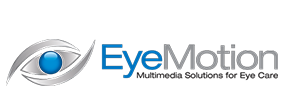What to Know About Your Children’s Eyes
Did you know that early intervention in children's vision is the key to success?
- 80% of learning comes through vision.
- In the first year of life, then by at least age 3 or 4, the child needs a comprehensive eye exam.
- 6 months old is not too early.
Even though a school vision screening, nurse evaluation or Pediatrician screening is important, it doesn't take the place of a comprehensive eye exam by an eyecare professional. Some symptoms of an undetected vision problem include: Decreased performance in school, aversion to reading, excessive blinking, rubbing eyes, headache or inability to see 3-D movies.
This could indicate conditions such as amblyopia (lazy eye), nearsightedness (myopia), astigmatism, or farsightedness (hyperopia) that can be corrected with glasses.
More serious conditions may need surgery such as Esotropia, where the eye turns in, or Exotropia where the eye turns out.
Although school screenings, nurses, and pediatricians are extremely valuable, they don't take the place of a comprehensive eye exam by an Optometrist or Ophthalmologist.
In fact, school screenings can give a false sense of security. There are visual skills necessary for reading beyond just reading an eye chart. If kids frequently lose their place while reading, they may benefit from glasses or vision exercises or therapy.
Vision Therapy is training of the eyes that help problems glasses alone do not.
A comprehensive exam can also reveal more serous threats to vision and health in children. A more rare but life threatening condition is a fast growing eye tumor called retinoblastoma. It is life threatening because the proximity of the eye is so close to the brain that fast intervention is critical. This is a condition that parents might notice by looking at pictures of the eyes and noticing a "white pupil."
Parents also need to also be aware of social issue, Shaken Baby Syndrome that is on the rise. It causes brain and retinal hemorrhage, as well as detachment and even death. Children up to age 3 do not have strong enough neck muscles to protect the vital organs from damage.
It is fine to bounce a baby on your knee in a playful manner, but Shaken Baby Syndrome happens when a forceful angry shaking occurs by an adult.
Resources to find out more information on children's vision can be found through your local eye care provider or websites such as American Optometric Association .
Also look for the InfantSEE program. It is a no cost public health program for early detection in the first year of life.
Don't Shake is the National center on Shaken Baby Syndrome
And American Academy of Pediatrics
The content of this blog cannot be reproduced or duplicated without the express written consent of Eye IQ.
